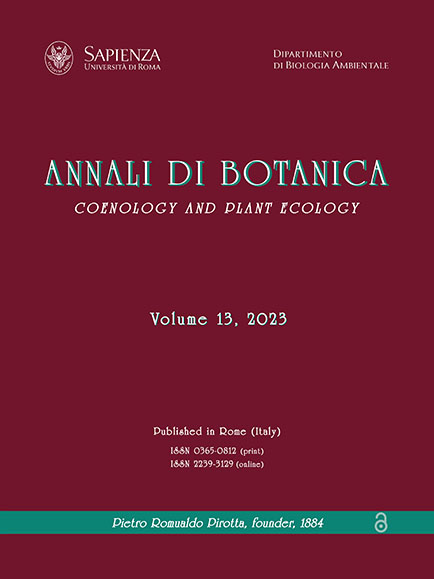The plants of Jericho. The earliest cultivars between symbiosis and domestication
DOI:
https://doi.org/10.13133/2239-3129/18125Keywords:
archaeobotany, Archaeology, domesticationAbstract
The central core of this article is to testify through the exemplary case study, for antiquity and complexity, of Tell es-Sultan/ ancient Jericho in Palestine, how archaeology and archaeobotany can help us to understand the peculiar relationship developed between a human community and specific plants, the cultivation of which blossomed over the centuries. If we put emphasis on human initiative we talk about domestication, however if we want to have a look from the perspective of reciprocal adaptability of plants and humans we could perhaps speak of symbiosis.
The excavations conducted for more than a century at Tell es-Sultan by four archaeological expeditions have returned a large collection of archaeobotanical finds (Hopf, 1969; 1983; 2008; Moricca et al., 2020), that have been retrieved thanks to the abilities of the archaeologists, but above all thanks to the extraordinary climatic conditions of the site, that allowed to preserve them for millennia.
This is due to the geological characteristics of the Jericho soil, to the morphology of the archaeological site, and to its paleoclimatic conditions (Mimi & Jamous, 2010; Ighbareyeh, 2019). However, this significant amount of botanical data has been only partially studied, focusing on specific periods of the ancient settlement. In the present contribution, I intend to offer a sketch summary of some salient historical-archaeological themes, with respect to which the archaeobotanical data known so far either provides curious and stimulating indications or suggests the need to further deepen the research. In this preliminary work, I focus on Pre-Pottery Neolithic, the period of the first great cultural flourish of Jericho, roughly between 11,000 and 6,000 BC, hoping that the readers of this journal will be inspired to study more in depth and extensively what the excavations of Jericho have made available, contributing to the knowledge of the site.

Downloads
Published
How to Cite
Issue
Section
License
Copyright (c) 2023 Lorenzo Nigro

This work is licensed under a Creative Commons Attribution-NonCommercial-ShareAlike 4.0 International License.
The copyright for articles in this journal are retained by the author(s), with first publication rights granted to the journal, articles are free to use with proper attribution in educational and other non-commercial setting.
